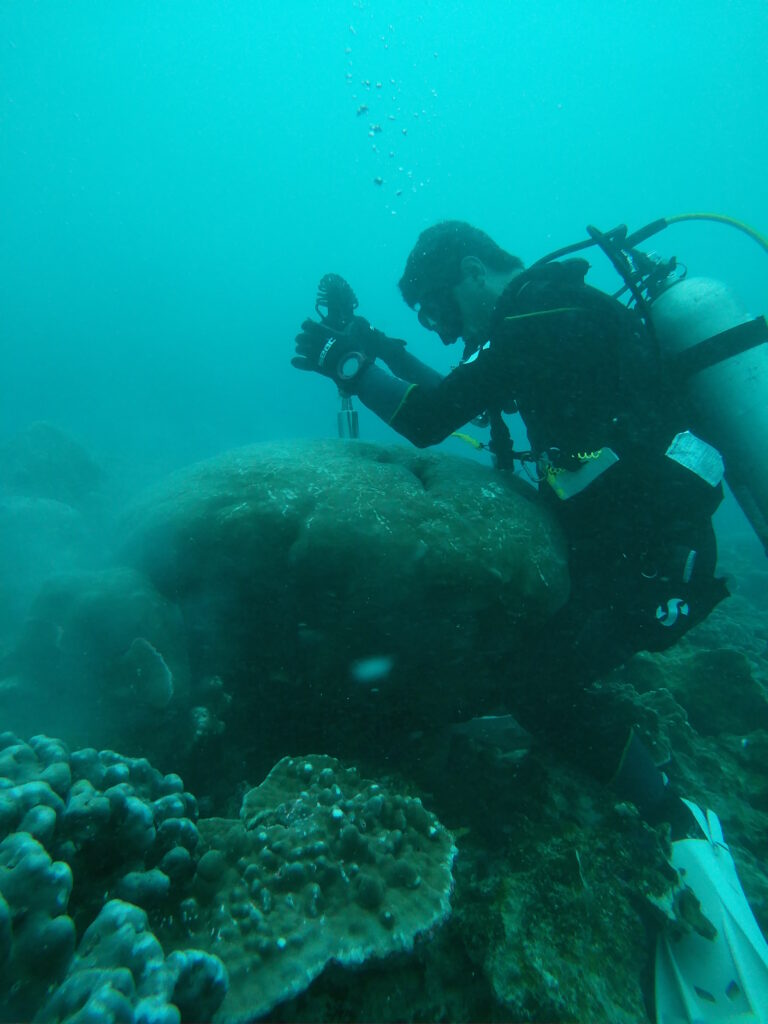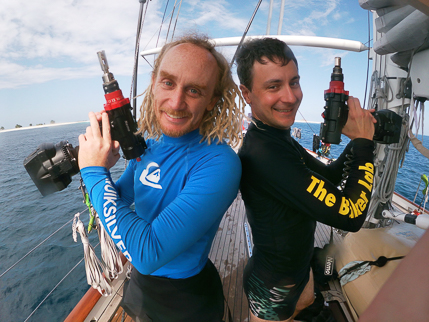A new paper in Science was recently published by one of the SPP 2299 projects, NITROCENE, led by Alfredo Martínez-García (MPI for Chemistry, Mainz). The paper, called ‘Decadal oscillations in the ocean’s largest oxygen-deficient zone’, was led by SPP 2299 researcher Nicolas Duprey (MPI for Chemistry, Mainz), and here we take the opportunity to break down some of the main findings and takeaways.
What is the main focus of the new paper, and what does it mean by ‘The Ocean’s Largest Oxygen-Deprived Zone Is More Dynamic Than Expected’?
New research analyzing nitrogen isotopes in tropical coral skeletons reveals significant decadal fluctuations in the size of the world’s largest oxygen-deficient zone (ODZ) over the past 80 years. This research was published recently in Science, by SPP 2299 member Nicolas Duprey (MPI for Chemistry, Mainz) from the NITROCENE project, and the team found that the ODZ is far more dynamic than previously understood. Their results indicated that the future of the Pacific ODZ relies on how future climate shifts modulate the amplitude of decadal changes of the Pacific Decadal Variability — posing significant implications for marine ecosystems.
Tropical oceans, while renowned for their productive fisheries that sustain millions of livelihoods worldwide, have regions that lie beneath which, due to high primary productivity at the surface, create conditions adverse to marine life a few hundred meters below. As organic matter is produced near the surface this sinks and decomposes, consuming oxygen through bacterial respiration and creating expansive low-oxygen zones below. These zones, known as oxygen deficient zones (ODZ), are critical to understanding ocean health.



The largest ODZ spans the eastern tropical Pacific, stretching from Central America westward into the open ocean. Its proximity to productive ecosystems has made it a key focus for scientists seeking to uncover how these zones vary naturally and how they may evolve under climate change. While many models predict that global warming will exacerbate oxygen depletion, limited long-term measurements in this remote region have left scientists uncertain about whether these changes are already underway.
Now, a collaborative study led by SPP 2299 researchers, Nicolas Duprey, Alan Foreman and Alfredo Martínez-García from the Max Planck Institute for Chemistry in Mainz, in partnership with researchers from Mexico, the USA, and Germany, has reconstructed 80 years of oxygen variability in the eastern tropical Pacific, offering new insights into this critical phenomenon.
How do you measure changes in the Pacific ODZ?
The discovery hinged on geochemical analyses of coral skeletons, and the stable nitrogen isotopes captured as the corals grow. These isotopes carry a unique fingerprint from the oxygen-deprived waters below, created by the microbial processes altering nitrate composition, which is transported to the surface waters and can be recorded in the skeletons. The Organic Isotope Geochemistry group led by Alfredo Martínez-García, at the MPI for Chemistry, Mainz, specializes in detecting the minuscule nitrogen quantities locked within coral skeletons. This expertise is what allows for such a unique study to be conducted.
The coral samples analyzed for this study were collected during a recent expedition to the Revillagigedo Archipelago, a remote island chain adjacent to the world’s largest ODZ. Researchers obtained cores from Porites stony corals growing on the seafloor of San Benedicto and Socorro Islands. These corals, built by thousands of tiny polyps that secrete calcium carbonate, form skeletons with alternating high- and low-density bands, akin to tree rings. These bands provide precise chronological markers for tracking environmental changes over decades.
The team pieced together an 80-year timeline of stable nitrogen isotopes from several corals, which are a proxy for denitrification (and can be used to detect the location of ODZs).

Coral skeletons: What did the corals show and implications for future warming
They found that roughly every decade there is an expansion and contraction of the Pacific ODZ, linked to Pacific Decadal Oscillation variability. The Pacific Decadal Oscillation (PDO), a long-term climate pattern similar to ENSO, operates across the Pacific and influences wind strength, ocean currents, and sea surface temperature variability. These shifts directly impact the size and dynamics of the ODZ.
This is the first indication that there is a long-term naturally driven cycle of ODZ variability. What this means is that the influence of global warming on the Pacific Decadal Variability should be carefully looked at if we want to understand the future of these peculiar water masses.
“Our collection of coral cores allows us to trace changes in oxygen-deficient waters across thousands of kilometers with remarkable precision,” says Dr. Nicolas Duprey, lead author and postdoctoral researcher at the Max Planck Institute for Chemistry in Mainz. “Each coral core is like a chapter in a library documenting the ocean’s history. By decoding these stories, we aim to shed light on how human activities impact marine environments and raise awareness about the urgent challenges facing our oceans.”
This research not only deepens our understanding of the natural variability of ODZs but also emphasizes their sensitivity to climate change. As global temperatures continue to rise, understanding these dynamics is crucial for safeguarding marine ecosystems and the communities that depend on them.
Publication
Duprey, N. N., Foreman, A. D., Carriquiry, J. D., Charles, C. D., Sanchez, S. C., Vonhof, H., … & Martínez-García, A. (2024). Decadal oscillations in the ocean’s largest oxygen-deficient zone. Science, 386: 1019-1024. https://doi.org/10.1126/science.adk4965
Post written by Jessica Hargreaves, and edited by Thomas Felis and Nicolas Duprey. Images from the original publication (Duprey et al., 2024) https://doi.org/10.1126/science.adk4965. Additional images were supplied by Nicolas Duprey.
